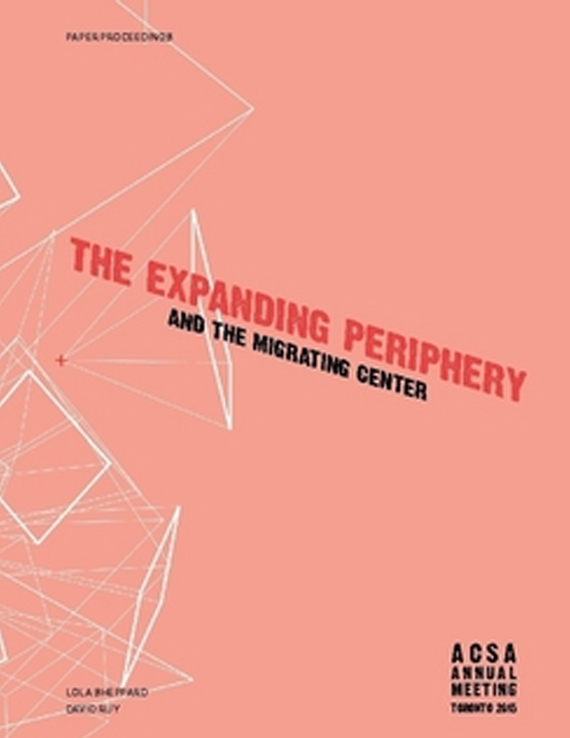Author(s): Ellie Abrons
For those focused on the frontier of architectural form making, there is immense pressure on matters of form. Much attention has recently shifted to the imperiled status of the architectural object and how it comes to be—and thus on the origins of architectural form itself. These pressures have led some architects to the conclusion that our obsession with context has caused us to neglect our disciplinary core: the architectural object. David Ruy, in particular, has articulated the way the preoccupation with external forces and relations has led to an emphasis on “architectural intelligence” over “architectural objects.” Given that “architectural intelligence” is difficult to define and to argue for as worthwhile to outsiders, architectural authority and power have diminished. Drawing from Graham Harman’s object-oriented philosophy, Ruy argues for an architecture that rejects relationism and turns to the architectural object, embracing its strange and withdrawn qualities.Implicated in this critique is architecture’s relationship to subjectivity and its investment in the people who will view and occupy our work. This results in a re-conception of the architect, as maker, and of the viewer, as receiver—for now all entities are considered objects and the knowing, enlightened subject disappears from the equation. Following this logic to its conclusion, it becomes apparent that in order to place renewed focus on architecture’s agency as a physical object it should relinquish concern for contextuality and human experience.This abandonment of the subject-object correlate is appealing to a set of designers who are unabashed in their obsession with architectural things. These designers are working to assert the power of an object to produce newness and as such, to reinvigorate architecture’s broader influence. Importantly though, these designers do not completely discard the notion of the architectural subject; rather, they restructure the hierarchy between subjects and objects. Typically, architecture is contingent upon an assumption that ideas precede objects and therefore, that subjects come before objects. Inverting this relationship allows for a new conception of objects where they form us, they establish us, they constitute us. In this way objects are able to influence subjectivities—not simply the other way around. This conception of a thing empowered can be seen in recent work focused on the production of forms that are both familiar and elusive—conjuring babies, rocks, animals and the like. This work is the focus of this paper and what I call allusive form.In essence, allusion refers to architectural quasi-forms that are evocative and provocative but unknowable and unnamable. They are evocative because they can be identified as being “almost” many things, but are none of them. They are provocative because they draw on elemental associations with the body, sexuality, and decay. They are unknowable in part because they are unnamable, but also because they do not reveal their origins. What follows is an illustrated account of allusion as a method of architectural form making that skirts the pitfalls of previous methods by placing emphasis on, and agency within, things themselves while simultaneously anticipating a viewing subject.
Volume Editors
David Ruy & Lola Sheppard
ISBN
978-0-935502-95-4

 Study Architecture
Study Architecture  ProPEL
ProPEL 
